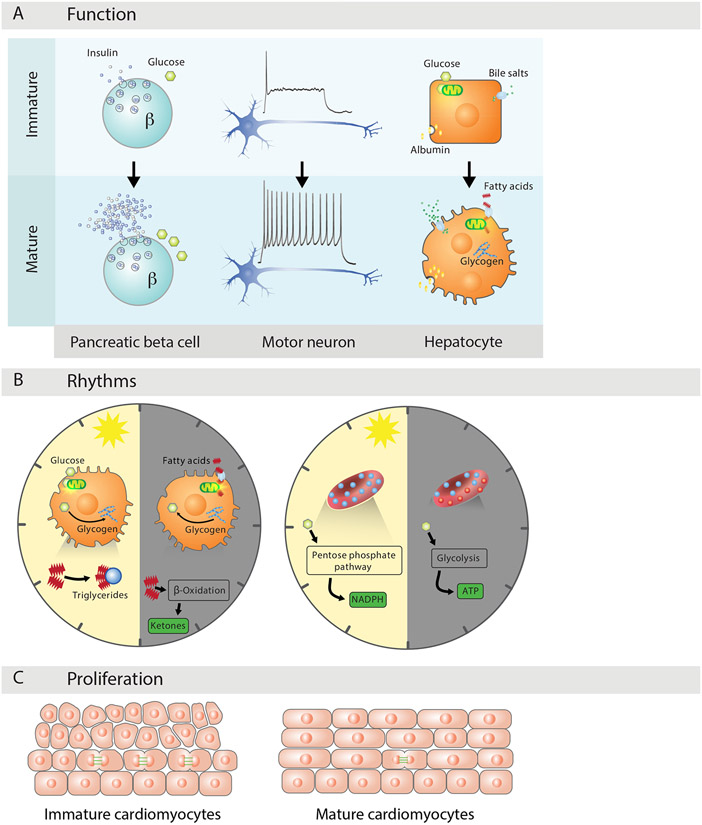Figure 4. Physiological Maturation.
(A) Function specialization defines maturational change. Mature beta cells respond to glucose stimulation with increased selectivity and insulin release capacity; mature motor neurons respond to steady stimulation with repeated firing of decreasing frequency; and mature hepatocytes expand export of albumin and bile salts, metabolize glycogen, and oxidize lipids for energy.
(B) A rhythmic physiology is vital for maximally adaptive functioning. Hepatocytes consume glucose and synthesize glycogen and triglycerides with daytime feeding, and shift to fatty acid consumption, glycogen breakdown, and ketone synthesis during nighttime fasting. Mature red cells turn to anaerobic glycolysis as oxygen dips at night, and re-route flux to NAPH synthesis to reduce hemoglobin oxidation as it rises during the day.
(C) Proliferative adaptations underlie maturation states. Mature cardiomyocytes are mostly quiescent, as shifting to lipid metabolism for energy triggers cell cycle arrest due to increased oxidative DNA damage.

